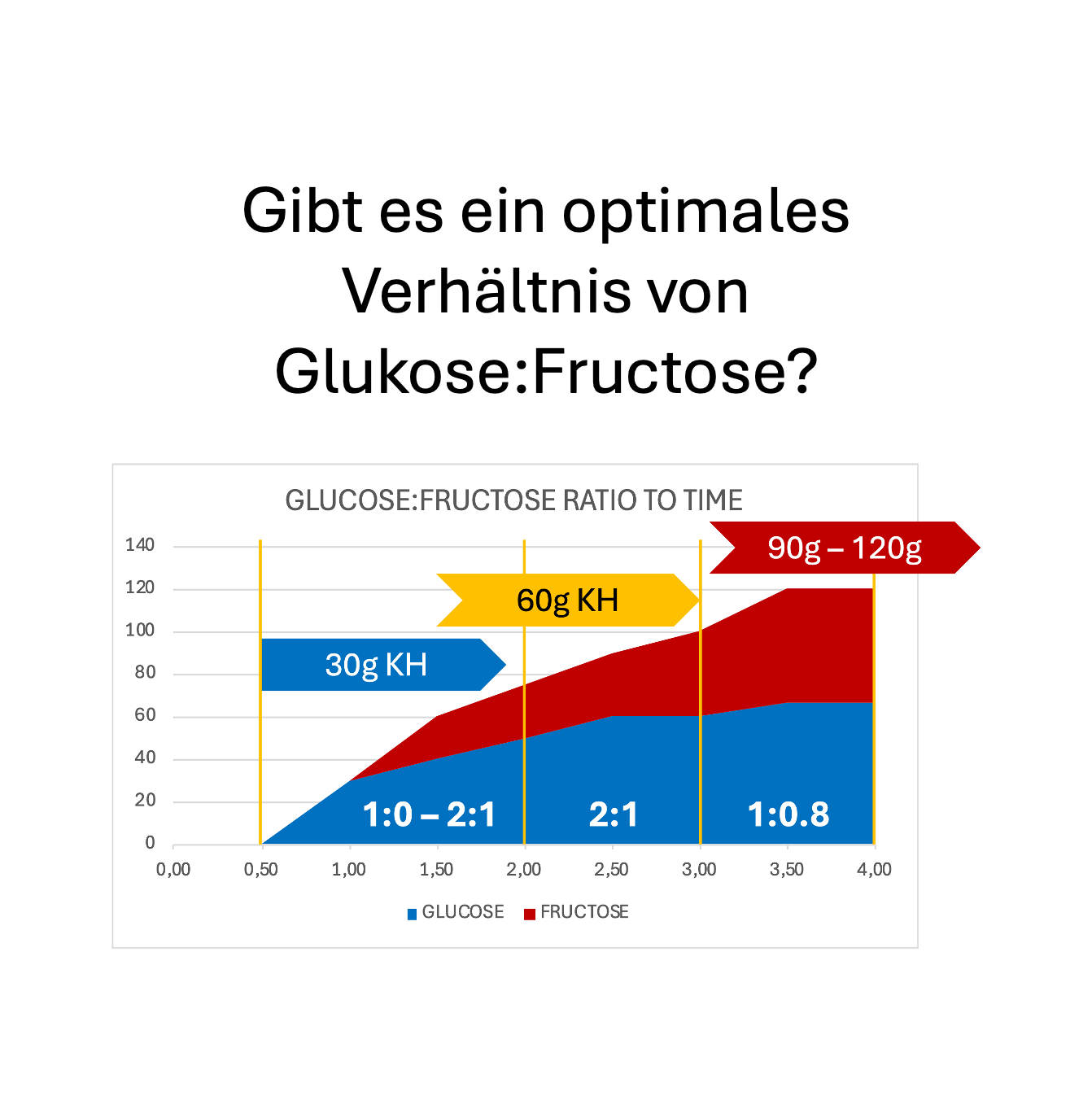Is there an optimal glucose:fructose ratio in endurance sports?
Endurance athletes are constantly searching for the perfect nutritional strategy to optimize their performance. A key question is the ideal ratio of glucose to fructose in sports drinks and nutrition. Let's take a closer look at the science on this topic.
The Importance of Carbohydrates in Endurance Sports
Carbohydrates are the main source of energy for endurance athletes. During longer periods of exertion, it is crucial to continuously supply the body with energy in order to maintain performance. The question now is which type and amount of carbohydrates is most effective.
The Science Behind Carbohydrate Intake
Transport mechanisms in the body
The absorption of carbohydrates in the intestine occurs via specific transport proteins:
- Glucose is taken up by the SGLT1 transporter, which depends on the presence of sodium in the intestine.
- Fructose uses the GLUT5 transporter
This finding led to the hypothesis that a combination of glucose and fructose could increase total carbohydrate absorption.
Oxidation rates and efficiency
Studies have shown that consuming glucose and fructose at the same time results in oxidation rates that are 50% higher than consuming glucose alone. This means that the body can obtain more energy from the carbohydrates consumed.
In search of the optimal ratio
Various research groups have addressed the question of the optimal glucose:fructose ratio. Here are some of the most important findings:
The 2:1 ratio
For a long time, a ratio of 2:1 (glucose:fructose) was considered optimal. With a total intake of 90g of carbohydrates per hour, this would mean 60g glucose and 30g fructose[3]. This ratio showed good results in many studies regarding oxidation efficiency and tolerability.
New findings: The 1:0.8 ratio
More recent studies suggest that with a higher carbohydrate intake of 120g per hour, a ratio of 1:0.8 (glucose:fructose) may be even more suitable. This could be particularly important for high-performance athletes and during very long periods of exertion.
The maximum amount of glucose that can be absorbed is obviously not 60g/h but a little less than 67g/h and this is due to the limiting factor of SGLT1. Fructose can then be added until the maximum of 120g/h is reached. However, the intake of fructose at this level is only possible if a corresponding level of work is required. Too much fructose can otherwise lead to a feeling of fullness, nausea and even vomiting.

According to current studies, it is also the case that when the load is less than 80% of the individual VO2 MAX, a higher intake than 2:1 (glucose:fructose) makes no sense and can sometimes even lead to gastrointestinal problems. The body first focuses on the glucose and then replenishes it with fructose under stress. The result is that it makes sense not to work with high amounts of fructose in the medium stress range.
Practical Recommendations
Optimal carbohydrate intake depends on several factors, including exercise duration and intensity:
- For loads of 60-90 minutes: about 30g carbohydrates per hour
- For loads of 90-120 minutes: about 60g carbohydrates per hour
- For loads over 2.5 hours: 80-120g carbohydrates per hour

When consuming higher amounts, it is particularly important to ensure a mixture of glucose and fructose in order to improve tolerance and avoid gastrointestinal problems.
Conclusion: There is no universal optimal ratio
Research shows that there is no single "optimal" glucose:fructose ratio that applies to all athletes and situations. Instead, endurance athletes should consider the following:
- The individual tolerance
- The duration and intensity of the stress
- The personal performance goals
It is advisable to experiment with different ratios and total amounts in training to find the best strategy for yourself. Ratios between 2:1 and 1:0.8 (glucose:fructose) can serve as good starting points.
Ultimately, the optimal nutritional strategy in endurance sports is as individual as the athlete himself. With the right approach and a little willingness to experiment, every athlete can develop his or her own personal, performance-optimized carbohydrate strategy.
Sources:
https://www.mysportscience.com/post/the-optimal-ratio-of-carbohydrates















Leave a comment
All comments are moderated before being published.
This site is protected by hCaptcha and the hCaptcha Privacy Policy and Terms of Service apply.